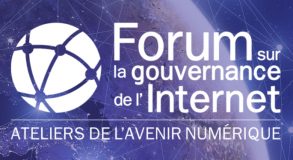1. Background and objectives of the survey
The purpose of the survey was firstly, to seek a common understanding of the trends, resulting in agreement, and secondly, to identify the disagreements caused by divisive issues or for which there was no visibility at the time of replying to the questionnaire. Issues on which the respondents agreed and disagreed constitute the technology backdrop.
This backdrop also underlies two further objectives: on the one hand to serve as a decision-aid tool for taking strategic ICT policy options in the medium to long term, and on the other hand, as a basis for assessing the opportunity for projects and actions in the short to medium term.
2. Structure of the surveys and issues covered
The survey included 72 questions on three themes, “A. Global Internet architecture”, “B. Internet naming, identifiers and identities” and “C. User trends” and 4 closing questions to help classification (Part D). The first 72 questions were posed in the form of statements and required replies expressing a variable level of agreement with the statements proposed by the author of the survey: “1: I totally agree”, “2: I rather agree “, “3: Uncertain / no opinion”, “4: I rather do not agree” and “5: I do not agree at all”.
It should be noted that in replying, participants were not asked to express a personal opinion (whether they were for oragainst a given development or technological breakthrough), but rather to provide a forecast based on their knowledge of the field and/or foresight activities.
3. Sample of respondents
164 respondents took part in the survey. 137 of them stopped before part C and 135 before part D. Only 131 finished the questionnaire. The bulk of the analysis focused on the latter, for whom classification data were available and usable.
4. Summary of “agreement” versus “disagreement”
In order to analyse the survey (raw data processing, data analysis, interpretation, etc.), AFNIC was assisted by the ENSAE Junior Études (the Junior Enterprise of the French National School of Statistics and Economic Administration).
As part of the process designed to obtain the components of the backdrop, accepted meanings for the notions of agreement and disagreement were proposed. These two concepts are described, including a definition of the thresholds involved, in the “methodology” section accompanying the results of the survey.
Of the 72 opinions proposed to respondents in the questionnaire, the 9 following statements obtained strong agreement* in terms of forecasts:
Part “A. Global Internet architecture”:
Q2. “The Internet will remain the dominant infrastructure for worldwide data exchange”
Q4. “Mobile phone services will be based on IP”
Q24. “Open standards will remain dominant for Internet applications”
Q27. “Denial of Service (DoS) attacks against Internet infrastructure and applications will increase”
Part “B. Internet naming, identifiers and identity”:
Q36. “The DNS, as an infrastructure, will be considered even more critical than it is today”
Part “C. User trends”:
Q59. “A computer, a phone, a personal digital assistant (PDA) as well as new (forthcoming) types of equipment will support a wide set of common features for the general public”
Q61. “Geolocation-based services will be integrated in a wide variety of mass consumer products”
Q66. “Cars, trains, planes and ships will provide to travelers the same electronic services (including Internet access) as at the office or at home, in an almost transparent way (without taking the quality of service into account)”
Q67. “The need for traceability of goods will spread to all economic sectors”
Conversely, the 7 following statements revealed strong** differences of opinion, either because of a lack of visibility, or because the population of respondents was divided into two opposing schools of thought.
Part “A. Global Internet architecture”:
Q8. “The majority of Internet applications will be based on peer-to-peer (P2P) architecture” : No visibility
Q9. “A new type of architecture for Internet applications will be discovered and will be dominant” : No visibility
Q20. “Energy consumption will be the main limitation on development of network infrastructure” : 2 schools of thought
Part “B. Internet naming, identifiers and identity”:
Q52. “The Semantic Web will govern information exchange between people” : No visibility
Q55. “Concerns about privacy will be eroded due to widespread uptake of services based on digital identities” : 2 schools of thought
Part “C. Trends among users”:
Q69. “The majority of Internet applications (as seen by users) will follow a peer-to-peer model” : No visibility
Q70. “A new model for Internet applications (as seen by users) will emerge and will subsequently become dominant” : No visibility
Finally, a categorical analysis (type of organisation, position held, etc.) of the points of agreement and disagreement shed light on a different level of arbitration. As an example and to clearly illustrate the divergence, consider the following statement: Q55. “Concerns about privacy will be eroded due to widespread uptake of services based on digital identities”. This statement, which involved two opposing schools of thought within the respondents, basically opposes two categories of organisations: on the one hand, the “government agencies” class in which over 70% of the population in the category agreed with the statement, and on the other, the “business / private lab” category in which over 60% of the population disagreed with the statement.
Further information
To learn more about the results of the survey, please see the presentation
* “Strong” agreement was obtained by applying the following two thresholds: prevailing opinion>= 70% and minority opinion<= 10%.By slightly relaxing the thresholds (60% resp. 15%), a complementary set of agreements can be obtained. ** Two indicators were defined: the absolute difference between opposing opinions ("da") and the ratio ("r") representing the weight of conflicting opinions compared with the level of uncertainty ("r"). If this ratio is low, this means that the visibility is poor. For strong disagreement, the following thresholds were applied: "2 schools" is considered to be attained if da <20% and r> 1.5 and “No visibility” is considered attained if “level of uncertainty”> 33% and da <20%. By slightly relaxing these thresholds, a complementary set of disagreements can be obtained. About AFNIC (Association Française pour le Nommage Internet en Coopération ) Non-profit organization, AFNIC is in charge of the administrative and technical management of the .fr (France) and .re (Reunion Island) Internet domain names. AFNIC brings together public and private members: representatives from the French government, Internet users and Internet Service Providers (Registrars). Further information.
About Afnic
Afnic is the acronym for Association Française pour le Nommage Internet en Coopération, the French Network Information Centre. The registry has been appointed by the French government to manage domain names under the .fr Top Level Domain. Afnic also manages the .re (Reunion Island), .pm (Saint-Pierre and Miquelon), .tf (French Southern and Antarctic Territories), .wf (Wallis and Futuna) and .yt (Mayotte) French Overseas TLDs.
In addition to managing French TLDs, Afnic’s role is part of a wider public interest mission, which is to contribute on a daily basis, thanks to the efforts of its teams and its members, to a secure and stable internet, open to innovation and in which the French internet community plays a leading role. As part of that mission, Afnic, a non-profit organization, has committed to devoting 11% of its Revenues from managing .fr Top Level Domain to actions of general interest, in particular by transferring €1.3 million each year to the Afnic Foundation for Digital Solidarity.
Afnic is also the back-end registry for the companies as well as local and regional authorities that have chosen to have their own TLD, such as .paris, .bzh, .alsace, .corsica, .mma, .ovh, .leclerc and .sncf.
Established in 1997 and based in Saint-Quentin-en-Yvelines, Afnic currently has nearly 90 employees.




